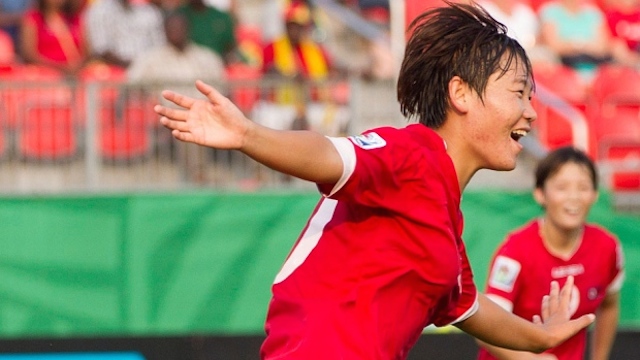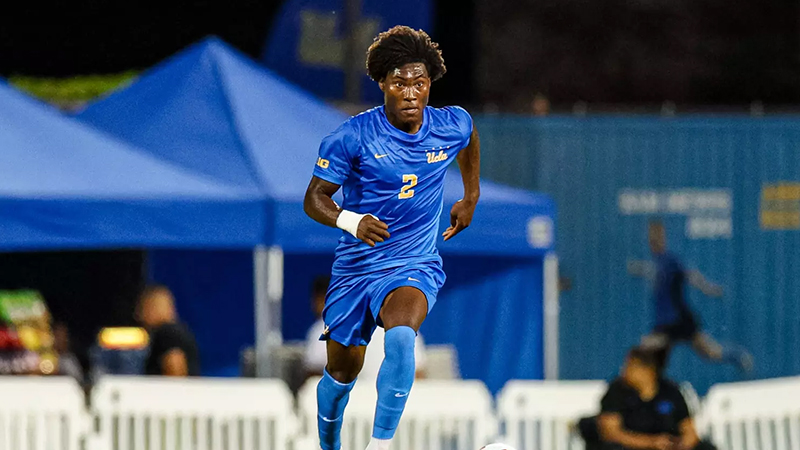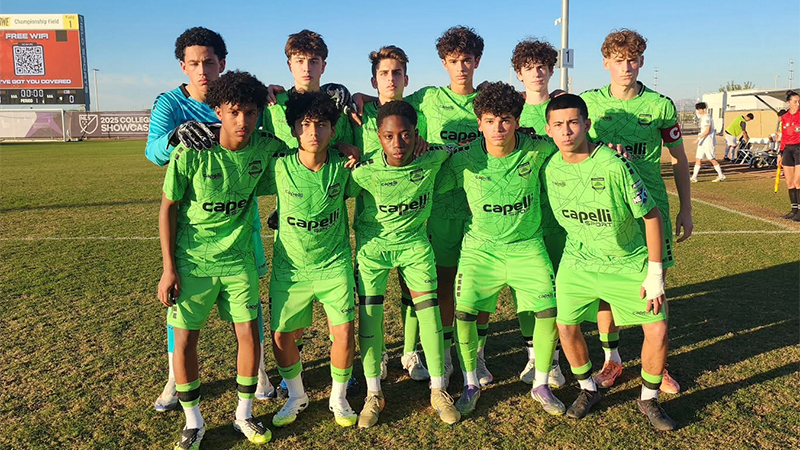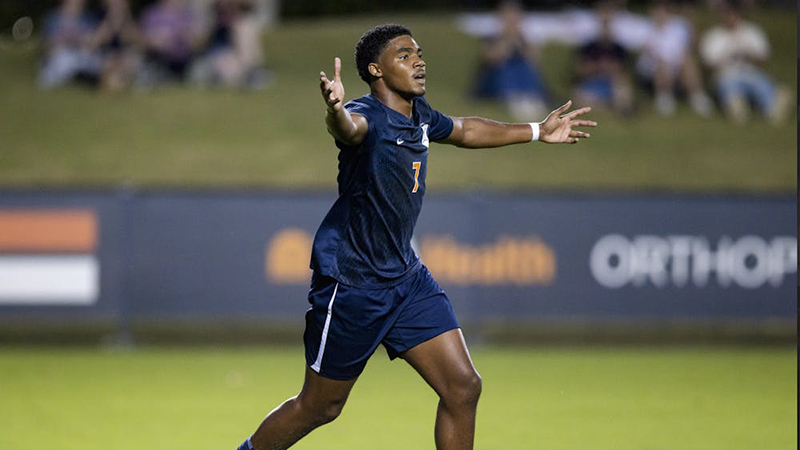N. Korea knocks U20s out of WC on penalties

No repeat titles here. The U.S. U20 Women’s National Team is headed home.
The U20 WNT slogged through 120 minutes of 1-1 action with resolute North Korea Saturday in Toronto before its hopes were dashed in a 3-1 loss on penalties in the quarterfinals. The U.S. had each of its first three penalties blocked by keeper Kim Chol Ok, which allowed North Korea to knock off the 2012 champions by hitting three of four. The team with more titles in this competition than any other won’t play in the semifinals. The U.S. finished in Canada with a 2-2 mark, and it's the second time in the last three tournaments the U.S. was knocked out on penalties in the quarterfinal round.
The U.S. got an early sixth-minute goal from Makenzy Doniak on a feed from Mallory Pugh but seemed to flip off the switch over the final phases of the game. After a bright start, the U.S. was tactically incoherent for much of the game and deserved the 53rd minute penalty conversion after a Stephanie Amack handball. The rest of the match was a slow bleed toward penalties, which ended in heartbreak and an early exit.
Here are three points from the match.
Unique attacking formula leads to mixed results
U20 coach Michelle French’s most difficult task with this particular side’s attacking chess pieces wasn’t necessarily choosing the XI. It was figuring, once she’d chosen it, how to put so much talent in concurrently dangerous positions without compromising the integrity of the whole. The U.S. struggled in that respect in its first two World Cup games, and it was lacking again on Saturday. But why?
When the U.S. set up in its attacking positions on Saturday, it look almost like an organized maelstrom. Lindsay Horan stepped up from the shallow part of the attacking midfield to allow Margaret Purce and Doniak to squeeze in alongside her for periods of interchange. Meanwhile, jack-of-all-attacking-trades Mallory Pugh shaded in every direction.
This tilted the field toward Pugh and created an ostensible 4-2-4 formation with four high acting forwards, with Rose Lavelle and Andi Sullivan providing support from deep in the midfield. Pugh occasionally angled and dove back inside to overcrowd the midfield, but at its most dangerous North Korea was flooded with four high players. Indeed, this pressure led directly to the first U.S. goal. While Purce and Horan distended the back four with swirling runs, Pugh wiggled loose on the right and shuttled in a cross that found Doniak free. Probably couldn’t have happened without the dangerous diversion.
In this firestorm of motion, the idea seemed to be to make Pugh the wild card. While Doniak largely stormed down the left channels, Horan stuck centrally as a classic center forward and Purce did her work on the central-right, Pugh went wherever she was needed. More often than not that mean overlapping on Purce on the right flank, but she also tucked underneath Horan, supported Doniak and even spent some time up top. In that sense, she had her fingerprints on the game as much as anyone on the field.
The problem with this was that Pugh wasn’t a midfielder in French’s effectual 4-2-4. She was a forward. By sucking her out of the midfield and creating a chasm between Lavelle, Sullivan and everyone else, the game turned into an unattractive scrum. With the linkup play nonexistent and Pugh at times playing higher than Horan, the U.S. appeared more likely to luck into a ping-pong goal in the box than actually create one through its own volition.
Unfinished midfield roles left a work in progress
Horan’s role dropping shallow inside the running wide forwards Saturday made Lavelle’s directive typically defensive in purpose. At Wisconsin, Lavelle is one of the most accomplished attacking midfielders in the nation, and as far as creativity is concerned, it doesn’t get much better in college soccer. With the U20s, Lavelle was pushed back into the architecture of the buildup as more of a holding midfielder, where she sat next to Sullivan with small license to track forward.
That maturation was asked to continue on Saturday. While she was clearly shackled creatively, Lavelle’s adaptation to the role was swift. As a deep-lying regista, Lavelle’s composure, vision and cool-headed play was well suited to creating from deep, and she was able to buttress attacks from the root instead of injecting herself directly into its proceedings.
But the U.S. got a brief reminder as to why its formation with Lavelle sitting deep with Sullivan has its drawbacks. Lavelle’s giveaway in the U.S. defensive third allowed North Korea to storm into the U.S. penalty area and create the chance that led to Amack’s handball and then the equalizing goal. It wasn’t until Taylor Racioppi was inserted for Pugh in the 82nd that Lavelle was able to move upfield, where she had a more decided impact on the game. By then North Korea had its claws in the midfield and it was too late.
Nominally, the U.S. plays with three midfielders in a 4-3-3, but that presumes Pugh drops in for Lavelle and Sullivan. In reality, the formation never really clicked out of the principles that made it a 4-2-4 in defense, transition or the build-up. That hurt the U.S. both in defending and attacking. In short, there was too little help where it was needed most.
Penalties provide the final dagger
The U.S. worked on penalties during its pre-tournament camp in Seattle, but it didn’t show on Saturday. Savannah Jordan, Horan and Lavelle each had their penalties saved, which allowed North Korea to build up a 2-0 edge through the first three rounds.
It wasn’t just that the U.S. didn’t score until Stephanie Amack’s well-taken effort in the fourth round. It was how they failed to score; the penalties were meek and hardly angled. Jordan forced Chol Ok to her right, but barely, and a standard dive allowed her to pluck the ball from the air and still have it framed within her chest. Horan went the opposite direction but the result was the same.
Finally, Lavelle tried to go back to Jordan’s side, but Chol Ok again sniffed out its purpose easily. North Korea only missed once thanks to a well-timed save Katelyn Rowland made diving to her right. Rowland was tremendous in spurts for the U.S. on Saturday, even getting a hand to the penalty North Korea converted in regulation before it skittered through. The U.S. simply couldn’t knit together enough attacking passages to provide the breakthrough, and their finishing touch in penalties let them down.
In games like these, the exhaustive effort from the previous 120 minutes is wiped off the board and teams start penalties with a blank slate. Unfortunately for the U.S., it seemed as though the general malaise that carried them through much of the game invaded the shootout. As a result, the U.S. will watch the rest of the tournament from home.
Headlines
- Recruiting Roundup: December 15-21
- How Do I Get Scouted by TopDrawerSoccer?
- 2026 Women's Division I Transfer Tracker
- 2026 Major League Soccer Mock Draft
- Women's College Postseason Top 100 Players
-
Top MLS Academy Alumni Performances

-
MLS NEXT Fest: U15/16 Goal-Scoring Stars

-
Commitments: HS Star heads to Portland

-
Player Rankings Spotlight: 2026 Girls

- 2025 Women's DI Postseason Awards



